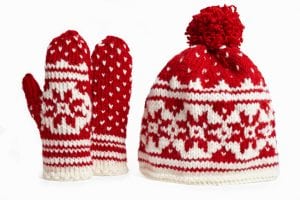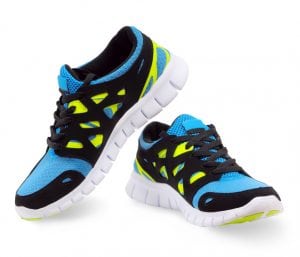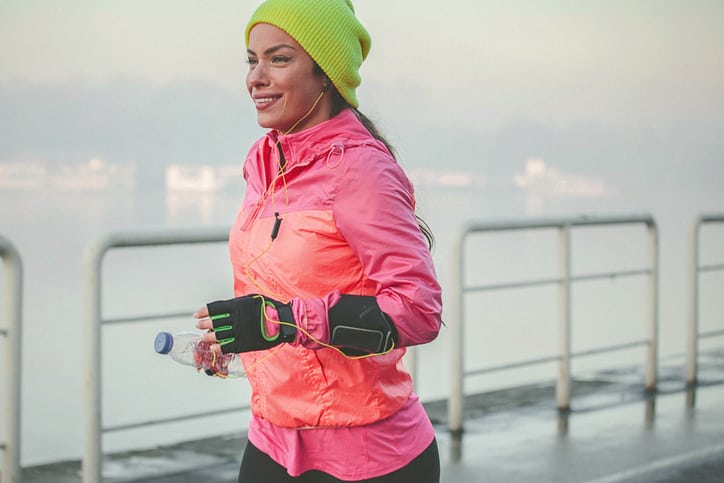10 top tips for running in winter weather
10 top tips to get through whatever the winter months can throw at us!
Whether you are training for a marathon or just a regular leisure runner you will no doubt know all about the challenges of running in winter conditions. Let us help you with some practical advice.
1. Get your clothing right
The trick to clothing in the winter is the layering system. Wear several layers of light, breathable fabrics rather than one heavy layer. The warm air gets trapped between the layers to keep you warm.
Fabrics are very sophisticated nowadays and materials such as polypropylene and capilene, wick away your sweat and keep you warm. We suggest something like this:
- a base layer – the first layer such as a breathable synthetic fabric that will draw away the sweat from your body. If it’s very cold, warm it up on the radiator before putting it on so you are warm from the get go
- a mid layer – such as a lightweight fleece to keep you warm and remove any moisture from the base layer
- an outer layer – such as a light water-resistant jacket to keep you protected from the wind and rain
Use any zips and air vents to regulate your temperature during the run. When starting out, dress as if you are running in 20 degrees warmer – you should feel slightly cool at the beginning of your run.
Avoid running in cotton tops. Cotton soaks up moisture and takes time to dry out which may make you feel cold.
A pair of leggings or running tights worn under shorts or tracksuit bottoms can keep your legs nice and warm.
2. Extremities

hat and gloves
During the winter months wear gloves or mittens and a hat as standard kit. As the blood goes to your muscles your extremities can be vulnerable to the cold. Hats and gloves will help to reduce heat loss.
Two layers of thin socks can be better and warmer than one thicker pair.
3. Visibility
When it’s dark and raining you will be hard to spot if all in black. Choose running gear that has reflective strips and is colourful. For high visibility pink and orange fluorescent clothing is supposed to be slightly better than yellow. Some runners wear a headlamp; this will help you see where you are going but also help you to be seen by others.
4. Shoes

Running shoes
In very wet weather avoid shoes with a lot of mesh. Shoes with Gore-Tex uppers or similar waterproof material will keep your feet from getting soaked and cold. Make sure you renew your shoes regularly – about every six months if you are a regular runner. Don’t start the winter season with poor grip. We have an association with Sporting Feet in Putney and Richmond and our clients are entitled to 10% off their running shoes.
If your shoes get wet, to dry them out and keep their shape, loosen the laces as much as possible, remove the insole and stuff your shoes with newspaper.
Think about the route your are going to run and avoid those with hazards that may not be easy to spot in the poor weather – such as pot holes or uneven paving.
5. Warm up
Warm up inside before your set off for your run. You could use a skipping rope or run up and down your stairs to get your muscles warm in preparation.
If meeting up with friends don’t stand around in the cold waiting for people to arrive. Arrange to meet somewhere warm or wait in your car until everyone has arrived.
6. Hydration
 Because it’s cold you won’t notice yourself sweating as you would in summer months so it’s important to make a conscious effort to drink plenty of water during your run.
Because it’s cold you won’t notice yourself sweating as you would in summer months so it’s important to make a conscious effort to drink plenty of water during your run.
7. Running in windy conditions
When it’s particularly windy, it’s best to set off against the wind whilst you are fresh and return with the advantage of the wind on your back. Wear an outer waterproof layer that will protect you against the wind. Remember to protect exposed skin on cheeks and nose with a layer of vaseline.
8. Post run routine
When you are coming to the end of your run slow down your pace and allow your body to cool down gradually. Don’t stop and do your stretches in the cold but wait until you get inside.
It’s important to get out of cold, wet clothing as quickly as possible and into dry kit from head to toe. Don’t hang around talking to friends in your running gear. Once warm have a hot drink.
9. Motivation

Running buddies!
When the weather is dark, wet and murky it’s hard to get motivated to run. So if you’re serious about keeping it up regularly, find a buddy to run with. It’s much harder to find excuses not to go when you are letting someone else down!
10. Running with a cold
If you have a mild cold and feel alright in yourself then it should be okay to run. But if your temperature is 38 degrees or more and you have a fever – don’t run. You are likely to make your fever worse and in extreme cases you can develop a virus that affects your heart.
If you are just taking up running or know you are carrying an old injury:
We advise an assessment with one of our Physios. We will carry out a comprehensive screening of your movement system which will help to identify any potential problem areas. We can set you going on a programme of exercises to address any imbalances so that injuries can be prevented.
Our team of Massage therapists can also help you get your soft tissues (muscles, ligaments, tendons and connective tissues) in top condition for running.
To book an appointment call us on 020 8876 5690, click here to email us or pop in for a chat.
If you have enjoyed reading this blog then try our other running related blogs:
Running a marathon? Is sports massage a luxury or a necessity?
Running a marathon? Read our Physio, Nic Pugh’s marathon story
Running the London Marathon? Why it’s a good idea to get checked out by a Physio first
How Pilates can help new mums get safely back to running – post pregnancy
London Marathon – race day preparations
10 top tips for injury free running



